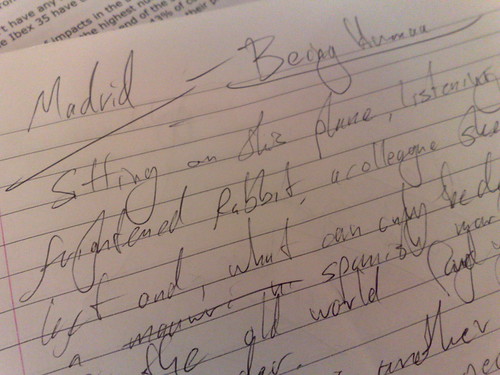“This is the story of four people named Everybody, Somebody, Anybody and Nobody. There was an important job to be done and Everybody was asked to do it. Anybody could have done it, but Nobody did it. Somebody got angry about that, because it was Everybody’s job. Everybody thought Anybody could do it, but Nobody realized that Everybody wouldn’t do it. Consequently, it wound up that Nobody told Anybody, so Everybody blamed Somebody.”
Recently, in a piece for Reputation Online, Steve Waddington from Speed Communications said that “corporate blogging is broken.”

..
..
While admitting this is indeed an over-statement, he still goes on to make some valid points as to why in the UK at least, corporate blogging has yet to take off.
Citing ownership, authenticity and human vs corporate communication as the three main reasons as to why, @wadds goes on to say that while these issues continue to throttle bloggging on a corporate level, there are some excellent examples out there of people doing it well.
I agree with Steve, there are some great examples of corporate blogs out there – you’re reading one right now 😉 – but what his post doesn’t do is explain how to address the issues that he raises.
Let’s try and do that shall we?
1) Ownership
Steve says:
“Should a blog be the pet project of a senior executive or fall within the communications or PR team, product marketing, customer relations or human resources? And legal will almost certainly want to get involved and pass judgement on blog posts and comments.”
We say:
It depends on your objective.
Time and time again when it comes to corporate blogging, brands just throw a single blog post up and expect it to change the world. I once actually had a conversation with someone (who shall remain nameless) where they said: “Well we had a MySpace, but it didn’t do anything. So we closed it.” – Amazing. This rule doesn’t just apply to corporate blogging, obviously. The same can be said for any business activity.
What is your goal? Paint a target, then go for it.
In this instance if your blog is to just put a human face onto some of your PR messages then this falls to your PR department. If you want to address a few customer service issues, then liaise with your customer service department. If it’s a combination of both, then speak to both.
As a side note, if it comes to your legal department, keep them in the loop the whole time. Work with them to develop a set of guidelines that you both agree on and stick to them.
It really isn’t rocket science.
2) Human communication vs corporate communication
Steve says:
“There are fundamental differences between how people communicate and how companies communicate – and very few corporate organisations have managed to bridge that gap.”
We say:
Agreed! Totally!
But how do we address this?
Once you’ve been through point 1 (setting your objectives and appointing ownership), your next step is to find the right voice. Seeking out and finding your very own brand evangelist/community manager might not be easy, but if you close your eyes and think hard you could probably come up with one maybe two people in your company that truly live and breathe your brand or product. If you can’t, then the chances are that it’s you.
You are a human being.
Guess what? So is the person you’re thinking of. Admittedly this is a very simple way of looking at things, but by truly embracing and trusting in your community manager, you will find your voice. Talk to each other, compare notes. Embrace social communications and don’t be afraid of people.
3) Authenticity
Steve says:
“Finally there is the issue of the generation of authentic content. It’s the only way to attract and stimulate an audience yet organisations see it as time consuming and requiring the constant input of senior management.”
We say:
If you stick to the points above, this third and final point should not be an issue. At 1000heads we talk about the anthropomorphism of brands and the importance of PEOPLE being able to talk to PEOPLE. There are people behind the brand, just like there are brands behind products.
Trust in your people, trust in yourself and most of all, remember that you are a human being.
Keep it real.
Keep it simple.
Keep it honest.
In summary; know your objective, be a human being and ultimately, use your corporate blog to delight and excite the people that matter most to your business. With any problem the first half of the battle is identifying what needs fixing. The next step is the how.
Hopefully we’ve gone some way to help out in that respect.
Please, leave a comment if you have any questions or opinions.
We’d love to help.




